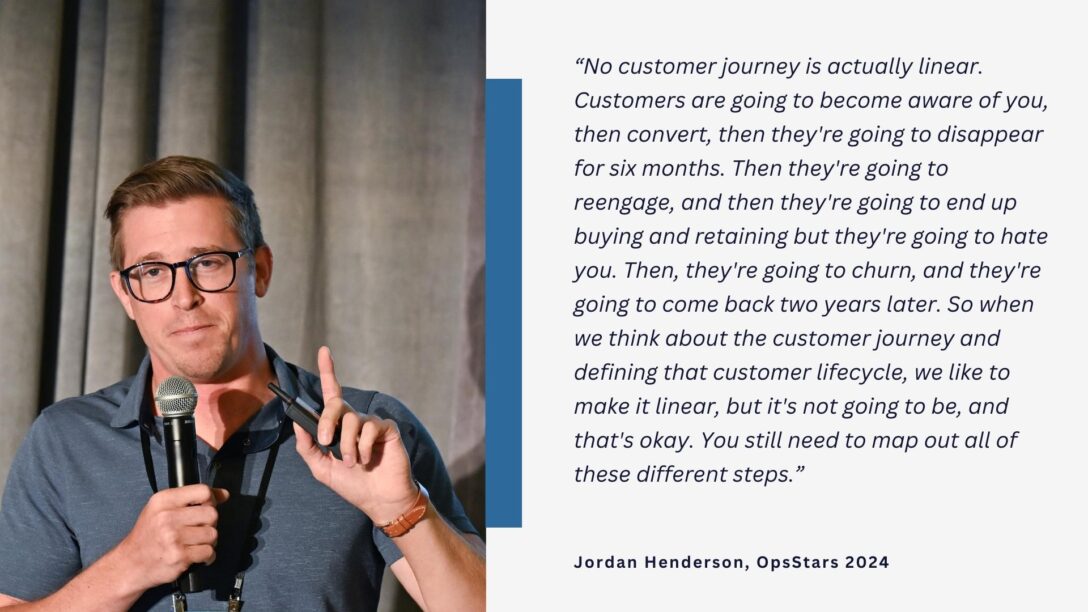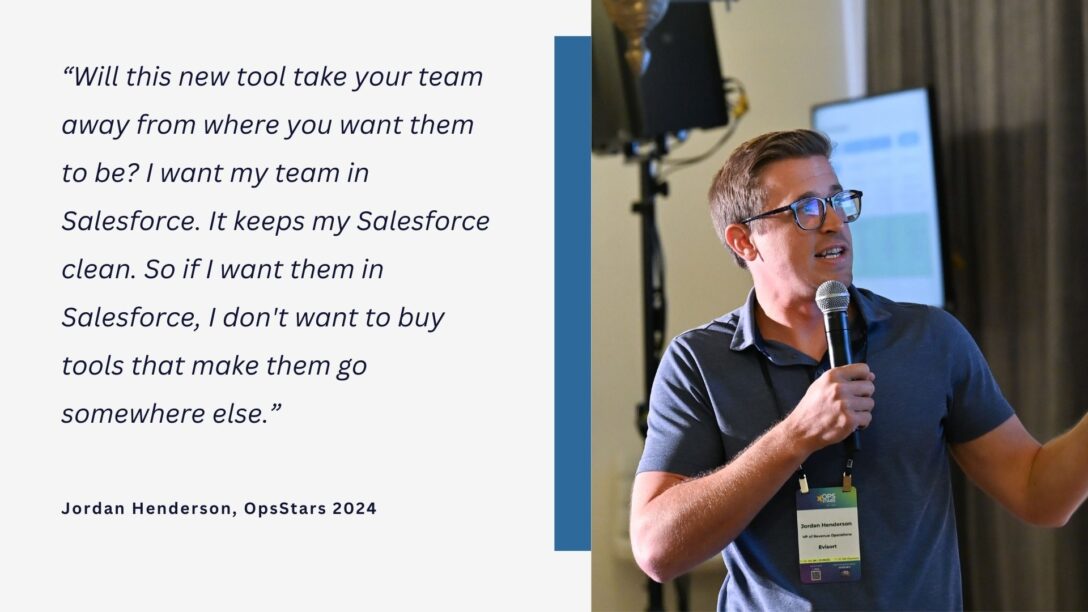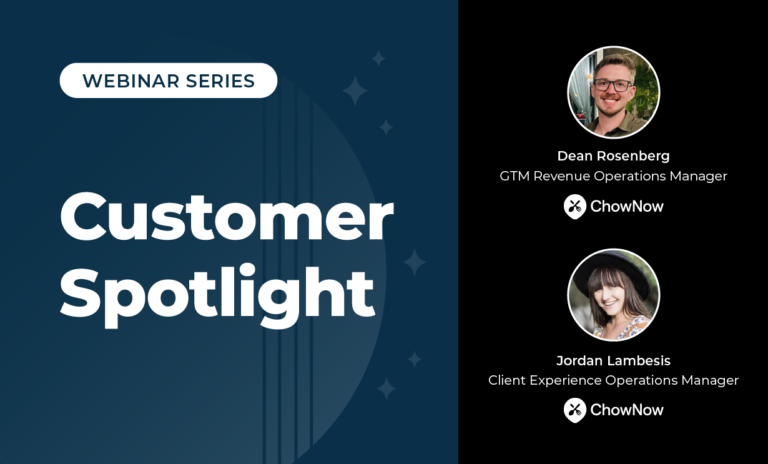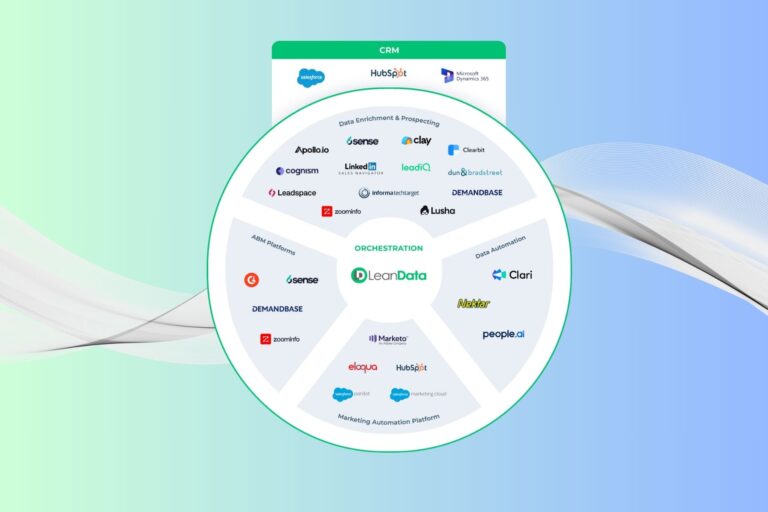When it comes to investing in new tools for your sales and marketing teams, choosing the right technology can feel like navigating a labyrinth.
With so many options, it’s easy to get distracted by flashy features or sales pitches. To make informed decisions, you need a strategy to cut through the noise and focus on what will truly drive impact for your organization.
Here are nine practical tips for evaluating sales and marketing tech tools, inspired by the lessons shared at OpsStars by revenue operations expert Jordan Henderson.

1. Identify the Problem You Need to Solve
Before exploring tools, ask the foundational question: Does this solve the problem I have?
It’s common to get sidetracked by tools with impressive features that may not align with your core needs. Begin by pinpointing the specific challenges in your customer lifecycle.
For example, if you’re looking for an email-sending tool, make sure it has the functionality to meet your outreach goals without unnecessary extras that inflate costs.
Always let your business objectives guide your choices.
2. Map Out Your Customer Journey
To ensure you’re addressing your organization’s actual pain points, map your customer lifecycle in detail. This involves identifying:
- What actions your customers take at each stage (e.g., awareness, engagement, conversion).
- What actions your team needs to take in response.
For example, if your prospects frequently drop off between demo requests and scheduling, you may need a tool like scheduling software to bridge the gap. Once you map this lifecycle, align your tech stack to the areas that need the most support.

3. Prioritize Purchases Based on Impact and Effort
Evaluate tools using a simple rubric: Impact vs. Effort.
- High-impact, low-effort tools should take priority. These are technologies that provide significant results with minimal onboarding or setup time.
- High-effort tools with less impact may not be worth the investment, especially for smaller teams.
For example, a lead routing tool like LeanData might provide high-impact results with moderate setup effort, making it a worthwhile investment compared to something with a steeper learning curve.
4. Look Beyond Problem-Solving: Evaluate Integrations
A great tool isn’t just one that solves your problem—it also integrates seamlessly into your existing systems.
Create an “integration wishlist” to ensure the tools you’re considering work well with:
- Your CRM (e.g., Salesforce, HubSpot)
- Call recording or sales cadencing software
- Scheduling tools
Avoid reliance on workarounds like Zapier, which can cause frustration and operational inefficiencies down the line. Direct integrations or integrations by design are often worth the investment.

5. Assess Scalability
Think about where your organization will be in three, five, or 10 years. A tool that meets your current needs may not scale effectively with your growth.
Be sure to ask the vendor:
- What’s their largest customer size?
- How does their pricing scale as your team grows?
- Does their product roadmap include features that align with your long-term needs?
Scalable solutions not only save time but also reduce costs associated with switching platforms in the future.
6. Test for Usability with Real Users
To gauge usability, allow team members to test the product during a free trial or pilot phase. Choose two users with varying technical skills—one tech-savvy and one less experienced—and observe:
- How intuitive the interface is for each user.
- How many clicks it takes to complete common tasks.
- What issues arise and whether they can be easily resolved.
This process provides insights into adoption challenges and helps you anticipate training needs.
6. Test for Usability with Real Users
To gauge usability, allow team members to test the product during a free trial or pilot phase. Choose two users with varying technical skills—one tech-savvy and one less experienced—and observe:
- How intuitive the interface is for each user.
- How many clicks it takes to complete common tasks.
- What issues arise and whether they can be easily resolved.
This process provides insights into adoption challenges and helps you anticipate training needs.
7. Consolidate Tools to Simplify Your Stack
A bloated tech stack can cause inefficiencies, duplicative costs, and poor user experiences.
Conduct a tool audit to identify:
- Tools that are underused or unused.
- Duplicative tools performing the same function (e.g., multiple cadencing solutions like SalesLoft and Outreach).
Streamlining your stack not only reduces costs but also ensures a smoother customer journey by minimizing fragmented experiences.
8. Negotiate Like a Pro
When it’s time to purchase, remember: Discounts are always available. Sales reps often have flexibility to offer:
- 20–25% discounts for contracts
- Additional savings for multi-year agreements
- Concessions for including more features or services
Don’t hesitate to push for better terms. For example, if you’re renewing a contract but reducing seats, ask for a proportional reduction in costs upfront. Sellers often prioritize avoiding churn over strict adherence to price floors.
9. Measure Adoption Before Adding More Tools
Adoption is the ultimate measure of a tool’s success. Before considering additional technologies, ensure your current tools are being used effectively:
- Are 80% of your team members regularly using the software?
- Are processes and workflows aligned to maximize its value?
Rolling out too many tools too quickly can overwhelm your team and lead to underutilization. Focus on driving adoption and ROI from your current stack before expanding.

Pro Tip: Ensure Your Tech Makes Buying Easier
Finally, remember that your tech stack should enhance, not hinder, the buyer experience.
Always evaluate technology through the lens of your customer’s journey. If a tool complicates processes or creates friction, it’s not solving a problem—it’s creating one.
Evaluating Tech Doesn’t Have to be a Nightmare
Evaluating new sales and marketing tools doesn’t have to feel like an overwhelming task. By focusing on the problem at hand, mapping your customer journey, and assessing integration, scalability, and usability, you can build a tech stack that drives real results.
Most importantly, take your time.
A thoughtful, strategic approach will ensure your investments not only solve immediate needs but also set your organization up for long-term success.










